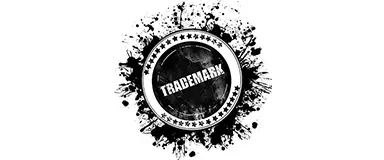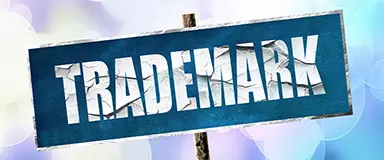Complete step-by-step guide to registering a trademark with the USPTO in 2025. Learn filing requirements, costs ($350 base fee), timelines (12-18 months), and maintenance requirements.
Domain Names and Trademarks: Protecting Your Digital Real Estate
Written by Emily Brooks ·

Picture this: You’ve spent months building your brand, perfecting your logo, and finally launching your business online. You type in what you think should be your website address, only to discover that someone else already owns the domain name that matches your trademark. Worse yet, they’re using it to sell competing products or demanding thousands of dollars to sell it back to you.
This scenario plays out more often than you might think. In our digital-first world, your domain name is the first touchpoint customers have with your brand. The relationship between domain names and trademarks has become one of the most complex and costly challenges businesses face online, especially as the internet continues to expand globally. So let’s dive into what drives this connection and how you can get both domain and trademark protection.
The Digital Identity Crisis
Domain names and trademarks both serve similar purposes: they help customers identify and find your business among practically endless competition. But they operate under completely different rules and systems. Trademarks are granted based on use in commerce and provide legal protection for specific goods and services. Domain names, on the other hand, operate on a “first-come, first-served” basis through domain registrars worldwide. To be fair, trademarks also operate on a first-come, first-served basis, but specific commercial use and documentation requirements take precedence and make trademark registration much more difficult than registering a domain name.
This can lead to some costly conflicts. A trademark owner might have exclusive rights to use their mark in their industry, but someone else could have registered the corresponding domain name years earlier for a completely different purpose. Alternatively, cybersquatters (people who register domain names with the sole intention of selling them to trademark owners) can snatch up this valuable digital real estate before legitimate businesses even realize they need it.
The problem has only grown with the explosion of new top-level domains (TLDs). Beyond the traditional .com, .org, and .net, there are now hundreds of options like .tech, .store, .global, and industry-specific extensions. Each new TLD or opening of previously country-specific ones creates fresh opportunities for conflicts and confusion.
How Domains Can Become Expenses
Consider what happened to a small coffee roasting company that had been operating under the name “Mountain Peak Coffee” for five years. They had a registered trademark for their name and logo, a loyal local following, and were ready to expand their online presence. When they tried to register mountainpeakcoffee.com, they discovered it was already taken by a generic landing page filled with competitor ads.
The domain owner wants $15,000 for the domain name. For a small business, that’s a significant chunk of their marketing budget. They face three options: pay the ransom, rebrand their entire online presence with a different domain name, or fight the cybersquatter through legal channels that could cost even more in legal fees and take months to resolve.
Entire industries have developed around maintaining and navigating this system. Domain brokers, legal specialists, and dispute resolution services all exist because companies want their trademarks and domain names to be the same, but the real world often doesn’t allow it.
The Global Complications
Unlike trademarks, which are typically registered country by country, domain names exist in a global namespace. A .com domain registered anywhere in the world is accessible everywhere, creating instant international conflicts. A business with trademark rights in one country might find its exact brand name being used by someone else in a different country with a matching domain name.
This global nature makes domain protection exponentially more complex. A company expanding internationally might discover that its desired domain name is already registered in each country it wants to enter. Some countries have specific requirements for their local domains (like .uk or .de), while others operate more open registration systems.
The challenge intensifies when dealing with internationalized domain names that use non-Latin characters. A brand name that looks identical to yours might be registered using slight variations in characters that appear the same to the human eye but are technically different in domain name systems.
The Prevention Strategy That Actually Works
Just as in healthcare, prevention is key in trademark protection, but it requires thinking beyond just your primary domain name. Businesses now need to register what’s called a “defensive domain portfolio,” securing multiple variations of their brand name across different TLDs before problems arise.
This means registering not just yourcompany.com, but also yourcompany.net, yourcompany.org, and potentially industry-relevant extensions like yourcompany. store or yourcompany.tech. But you might need to go a step further and secure common misspellings, abbreviations, and variations that customers might type when looking for your business.
After that comes proactive monitoring, which is where trademark protection services can come in handy. Their domain name monitoring services can alert you when someone registers a domain name similar to your trademark, allowing you to assess whether it poses a threat to your brand. Professional services have grown to cooperate with registrars, allowing them to crawl through practically any registry for potential issues.
When to Fight and When to Walk Away
Not every domain name conflict requires legal action. Sometimes, the most cost-effective solution is to simply choose a different domain name for your business. If someone registered your exact brand name as a domain but isn’t actively using it to compete with you or confuse your customers, it might not be worth the cost and time of a legal battle.
However, there are clear situations where action is necessary. If someone is using a domain name that matches your trademark to actively compete with your business, mislead your customers, or damage your reputation, you have scant few options beyond a cease-and-desist or a legal battle.
The Uniform Domain-Name Dispute-Resolution Policy (UDRP) provides one of the fastest and least expensive alternatives to traditional litigation for select purposes. This process was specifically designed to address cybersquatting and trademark violations in domain names, and it operates internationally across all generic TLDs.
Building Up Your Digital Defenses
The key to protecting your digital real estate lies in treating domain names as a vital part of your broader trademark protection strategy. This means registering important domain names early in the development process, before you launch your brand publicly and go to market.
Consider working with a professional trademark protection service that understands both traditional trademark law and domain name systems. These services can help you develop a comprehensive strategy that protects your brand across all digital channels while staying within your budget.
Remember that domain name protection isn’t a one-time task. As your business grows and expands into new markets or product lines, your domain portfolio should evolve with it. The same goes for new developments in the digital space, as new TLDs keep opening that might require you to pivot in your strategy. Regular monitoring and timely registrations of new domains should be key to your efforts.


